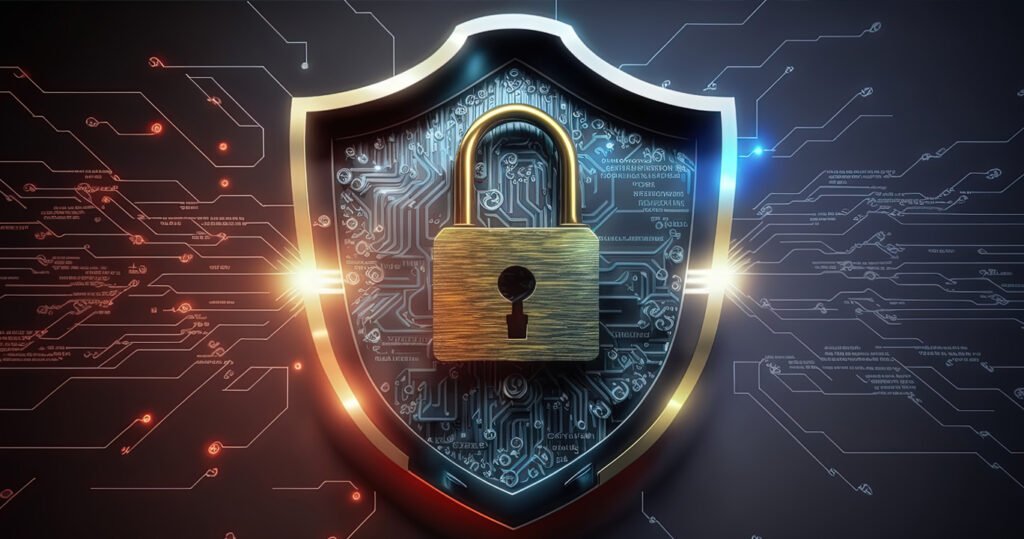Guardians of the Virtual Realm: Navigating Cybersecurity in the Digital Age
In an era dominated by interconnected technologies and digital landscapes, the importance of cybersecurity has become more critical than ever. As our reliance on digital platforms continues to grow, so does the threat landscape, making the role of cybersecurity professionals indispensable. This article delves into the evolving challenges, strategies, and the imperative need for cybersecurity in the digital age.
I. Introduction
A. The Digital Revolution: A Double-Edged Sword
The digital age has ushered in unprecedented convenience, connectivity, and innovation. However, with the proliferation of digital platforms, the threat of cyberattacks has surged. Cybersecurity, once a niche concern, has now become a frontline defense against a myriad of online threats.
B. Defining Cybersecurity in the Digital Age
Cybersecurity encompasses a set of practices, technologies, and processes designed to safeguard digital systems, networks, and data from unauthorized access, cyberattacks, and data breaches. In the digital age, cybersecurity is not merely a reactive measure but a proactive and dynamic approach to mitigating evolving threats.
II. Evolving Threat Landscape
A. Sophisticated Cyberattacks
- Ransomware Attacks:
- The rise of ransomware attacks targeting individuals, businesses, and critical infrastructure.
- Cybercriminals encrypt data and demand ransom for its release.
- Advanced Persistent Threats (APTs):
- Coordinated and stealthy cyberattacks are often attributed to nation-states or organized cybercriminal groups.
- Persistent efforts to infiltrate and compromise specific targets over an extended period.
B. IoT Vulnerabilities
- Internet of Things (IoT) Security Challenges:
- The increasing interconnectedness of devices amplifies the attack surface.
- Cybersecurity risks associated with insecure IoT devices and networks.
- Botnet Exploitation:
- Cybercriminals leveraging compromised IoT devices to create powerful botnets.
- Employing botnets for large-scale distributed denial-of-service (DDoS) attacks.
III. Key Principles of Cybersecurity
A. Risk Management
- Identifying and Assessing Risks:
- Regular risk assessments to identify vulnerabilities and potential threats.
- Prioritizing risks based on their impact and likelihood.
- Effective Risk Mitigation:
- Implementing security controls and measures to mitigate identified risks.
- Continuously monitoring and adapting strategies to evolving threats.
B. User Education and Awareness
- Human Firewall:
- Educating users about cybersecurity best practices.
- Empowering individuals to recognize and avoid phishing attacks and other social engineering tactics.
- Cultivating a Security-Conscious Culture:
- Fostering a culture of cybersecurity awareness within organizations.
- Encouraging a collective responsibility for digital security.
IV. Technological Defenses
A. Endpoint Security
- Antivirus and Anti-Malware Solutions:
- Deploying robust endpoint security solutions to detect and remove malicious software.
- Regularly updating antivirus databases to defend against evolving threats.
- Endpoint Detection and Response (EDR):
- Utilizing EDR solutions for real-time monitoring of endpoint activities.
- Enhancing threat detection and incident response capabilities.
B. Network Security
- Firewalls and Intrusion Detection/Prevention Systems (IDS/IPS):
- Implementing firewalls to monitor and control network traffic.
- Deploying IDS/IPS to detect and prevent unauthorized access and malicious activities.
- Secure Wi-Fi Practices:
- Ensuring the encryption and secure configuration of Wi-Fi networks.
- Mitigating the risk of unauthorized access and man-in-the-middle attacks.

V. Emerging Technologies in Cybersecurity
A. Artificial Intelligence (AI) and Machine Learning (ML)
- Behavioral Analytics:
- Using AI and ML for real-time analysis of user behavior.
- Identifying anomalies and potential security threats.
- Automated Threat Detection and Response:
- Leveraging AI-driven automation for rapid threat detection and response.
- Reducing the time between identifying a threat and implementing countermeasures.
B. Blockchain for Enhanced Security
- Decentralized Security Framework:
- Applying blockchain’s decentralized nature for enhanced data integrity.
- Reducing the risk of tampering and unauthorized access.
- Smart Contracts for Security Protocols:
- Implementing self-executing smart contracts to automate and enforce security protocols.
- Enhancing trust and transparency in digital transactions.
VI. Challenges and Considerations
A. Global Collaboration
- International Cybersecurity Cooperation:
- The need for global collaboration to address cross-border cyber threats.
- Establishing frameworks for information sharing and coordinated response efforts.
- Legal and Ethical Challenges:
- Navigating legal and ethical considerations in the realm of cybersecurity.
- Balancing the need for cybersecurity with individual privacy rights.
VII. The Future of Cybersecurity
A. Quantum Computing Challenges
- Post-Quantum Cryptography:
- Preparing for the potential impact of quantum computing on current cryptographic algorithms.
- Developing and implementing quantum-resistant cryptographic solutions.
- Quantum-Safe Cybersecurity Measures:
- Integrating quantum-safe practices into cybersecurity strategies.
- Anticipating the future landscape with quantum-resistant security measures.
B. Adaptive and Resilient Cybersecurity
- Continuous Monitoring and Adaptation:
- Shifting towards adaptive cybersecurity measures that evolve with emerging threats.
- Implementing continuous monitoring and improvement strategies.
- Resilience Against Cyberattacks:
- Enhancing organizational resilience to withstand and recover from cyberattacks.
- Preparing for cyber incidents is an inevitable aspect of the digital landscape.
VIII. Conclusion
A. A Sentinel in the Digital Realm
- Navigating the Ever-Changing Landscape:
- Reflecting on the dynamic and evolving nature of cybersecurity in the digital age.
- The role of cybersecurity as a guardian against an ever-expanding array of digital threats.
- Collective Responsibility:
- Recognizing that cybersecurity is a collective responsibility that extends beyond individual users and organizations.
- The imperative for continuous innovation, collaboration, and vigilance in safeguarding the virtual realm.
As we chart our course through the digital age, cybersecurity emerges as a linchpin in preserving the integrity, confidentiality, and availability of our digital assets. The dynamic interplay between evolving threats and innovative defenses defines the landscape of cybersecurity, where adaptability and resilience are as crucial as robust technologies. In the ongoing battle against cyber threats, the sentinels of the digital realm stand ready, armed with knowledge, technology, and a collective commitment to securing the digital future.